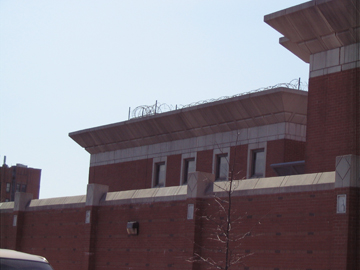
5
Criminology
BROOKLYN, 2010
In 2010, after Gila had told me of her affair with Lansky, I took the 3 train to Brownsville, the only white person in the car until a few Hasidim got on and then off again somewhere where the tracks rose aboveground. The 24-hour deli was shut on all sides, the steel doors tagged with graffiti. Lott Avenue, Rockaway Avenue—beyond weeds and ailanthus trees stretched a vast asphalt lot, empty except for a row of electrical boxes near the chain-link fence. I took a photograph. I took another photograph of an old building with four garbage cans chained in front of it beside the Olutunu Cherubim & Seraphim Church. “Can it be saved?” asked a man in an army coat, speaking about the building or perhaps the world. On Pitkin Avenue people loitered and smoked and shopped—Fish Sandwich, Burger, ATM—but the side streets were almost empty, lined with row houses, a storefront church, a group of Caribbean men playing dominos on the hood of someone’s car. There were once seventy Orthodox synagogues in Brownsville. There were still dairy cows in that part of Brooklyn then. My grandparents on my father’s side had lived there, people I hardly knew. Number 33 Chester Street was where Meyer Lansky and his family had first lived after coming from Grodno, before they moved to the Lower East Side. All that world was gone now. Now 33 Chester Street was a vacant lot full of construction debris and weeds. Across from it was a juvenile detention facility that took up an entire block, a pink brick structure with almost no windows, concertina wire atop the high walls, catching plastic.

The destination of this journey is home. Upon arrival, we will find, as we might have expected, that home is no longer there.
Number 33 Chester Street.
All this lore I know now. All this lore because of what Gila Konig told me before she died.